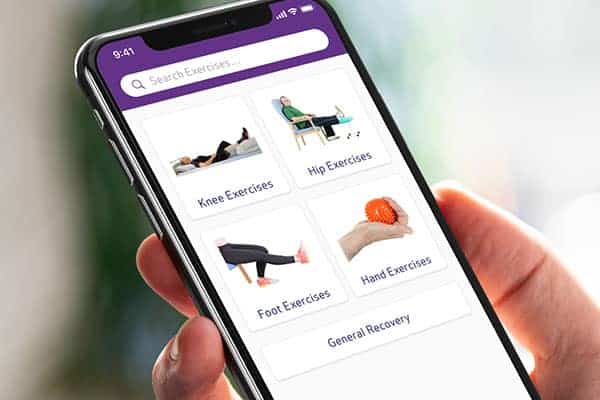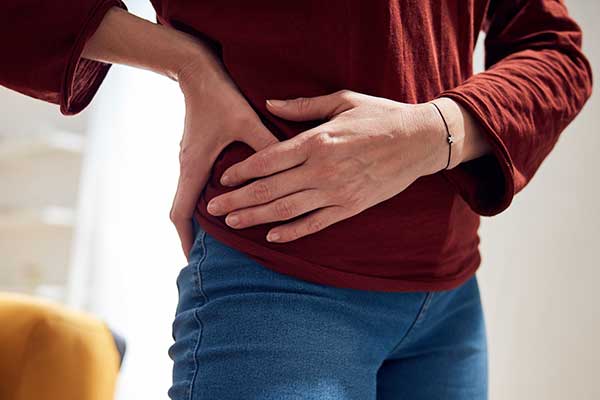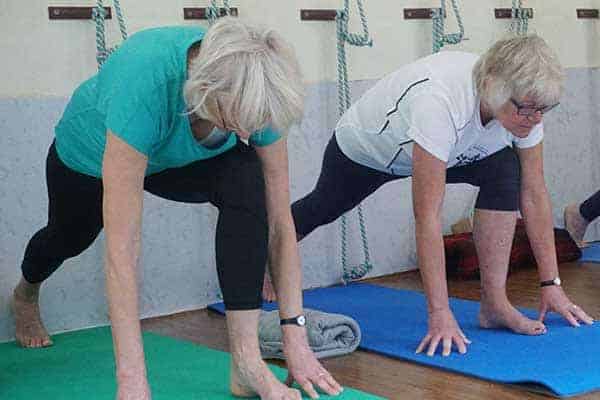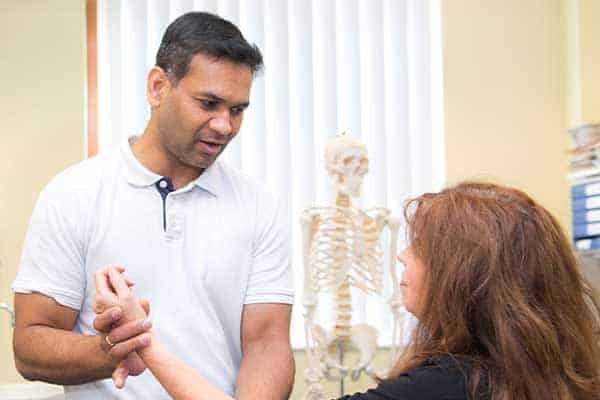Lateral hip pain is pain that is felt around the outside of your hip and thigh.
What causes lateral hip pain?
The usual cause is overloading of the three gluteal muscles that make up your buttocks.
These stabilise your pelvis during functions such as walking or climbing stairs and allow you to move your hip.
It is also possible to overload or compress the gluteal tendon that connects these muscles to your thighbone.
These stresses can be a result of a sudden increase in exercise or from having weakened gluteal muscles.
Lateral hip pain is also linked to having one leg shorter than the other, having osteoarthritis in the hip or lower back, or having scoliosis.
You are more likely to experience lateral hip pain if you are a woman aged 40-60.
What are the symptoms of lateral hip pain?
For most people:
- You feel pain and tenderness around the outside of your hip and thigh and/or around your buttocks.
For some people:
- You notice the pain when standing, especially on one leg.
- You notice the pain when sitting, especially with your legs crossed or feet tucked under you.
- You notice the pain when walking, especially up hills or stairs.
- You notice the pain when getting into or out of a car, or a bath.
- The pain is made worse by direct pressure to the side of your hip, such as lying on your side at night.
How is lateral hip pain diagnosed?
If you have any concerns about your hip, you should make an appointment with your doctor or a physiotherapist, particularly if the pain was caused by a fall or an accident, if you also have a fever or rash, or if the pain is in both hips and other joints.
However, in most cases there is no need to see a health professional and lateral hip pain can be self-managed. Although the symptoms often used to be treated with a steroid injection, this is no longer recommended as a first line of treatment.
What are the treatment options for lateral hip pain?
With something like lateral hip pain, it is important both to treat the pain and to treat the causes.
If possible, try to identify the activities that are aggravating your pain and change your routine accordingly. In the case of walking, for example, you might walk a little slower, avoid steep slopes, or consider using walking poles or a stick.
Put an ice pack on your hip joint area for 5-10 minutes, three to five times a day, to relieve pain. (Do not put ice directly next to skin as it may cause ice burn. Wrap it in a damp tea towel. Remove the pack if irritation increases. Allow the area to return to normal temperature before reapplying the ice.)
You could try anti-inflammatory painkillers such as Ibuprofen. Some anti-inflammatory painkillers also come as creams or gels, which you can rub over your hip area. These tend to produce fewer side-effects than those taken by mouth. If you cannot take anti-inflammatory painkillers, other painkillers such as paracetamol, with or without codeine added, may be helpful. Ask your doctor or pharmacist for advice.
It is also important to begin to increase the load tolerance of your gluteal muscles and there are many different exercises and activities you can do to help with this.
What is the prognosis (outlook) for lateral hip pain?
Depending on whether your lateral hip pain is linked to other conditions, recovery may take a matter of weeks or longer.
Even if you have been experiencing the symptoms for many months, making the changes mentioned here should have a positive effect.
How can I prevent recurrence of lateral hip pain?
In addition to changing your activities and continuing with your exercises, you can try to avoid a further episode of lateral hip pain by removing any compression on your hip.
You may be able to improve your posture. Always stand with your feet hip-width apart, balancing your weight evenly. When sitting, avoid crossing your legs. When standing up, try not to let your knees drift together. Take your time on stairs and use the hand rail.
You might also consider losing weight to reduce overloading.

Pocket Physio | Download now
Search for ‘Pocket Physio’ on the Apple App Store for iOS and the Google Play Store for Android to download for free.




